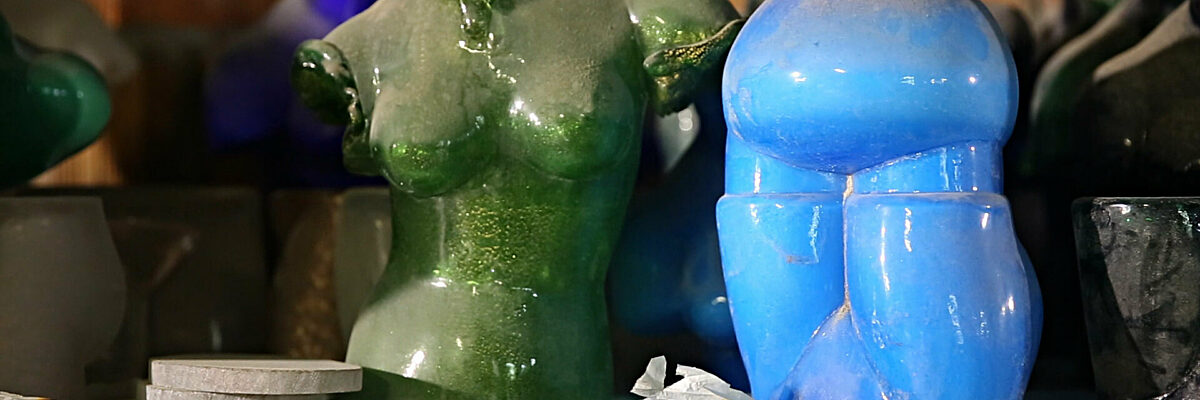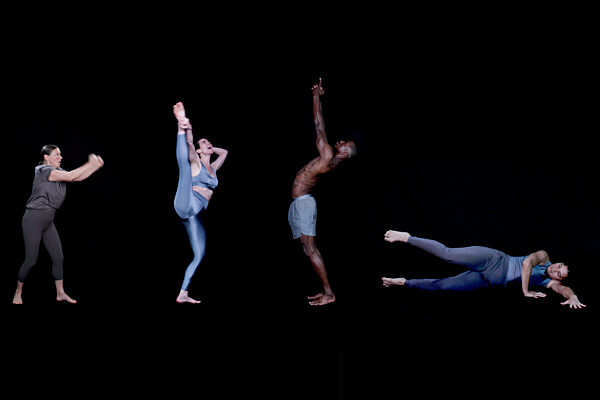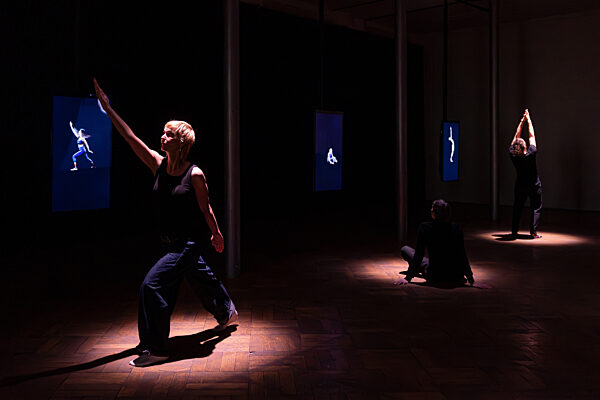
BENEATH THE SURFACE OF SKIN
In her multi disciplinary and audiovisual essayistic practice, Helen Cammock (°1970) connects the personal and intimate with the political, the lived experience with its social enactment, in an attempt to better understand the human condition in all its frailty and strength. Seemingly without effort, she moves from personal stories to a lucid narration of the histories and power structures that make up the scenery in which these narratives take place. Her work sheds light on how these histories are alive, embodied in people and their stories.
In her solo exhibition in STUK, BENEATH THE SURFACE OF SKIN, Helen Cammock presents two recent bodies of work: Che si può fare (2019) and They Call it Idlewild (2020).
Titled after an aria from 1664 by Italian Baroque composer Barbara Strozzi (1619 - 1677), Che si può fare explores the power of the lament - specifically women’s laments and their potential to act as expressions of survival, resilience, and hope. The result is a transhistorical, international, contemporary lament of its own, voiced by women across centuries and geographies. Making leaps between different places, times and contexts, Cammock forces viewers to acknowledge complex global relations and the inextricable connection between the individual and society. Che si può fare was created during a six-month residency and journey across Italy, during which Cammock collected songs, stories and testimonies from performers, activists, artists, politicians, historians, migrants and refugees. The work incorporates a film across three screens, a series of vinyl cut prints, a screen-printed frieze, and a research room with books and objects that Cammock collected or was given while in Italy. It was previously presented in solo exhibitions in Whitechapel Gallery, London (Jun 2019) and Collezione Maramotti, Reggio Emilia (Oct 2019).
In STUK, Che si può fare is juxtaposed by They Call it Idlewild, a single-channel video work in which a narrative overlays a series of images of the interior spaces of Wysing Arts Centre, its archive and the local environment. The gentle rhythm of the stills support the voice of Cammock, musing on the concept of idleness and its relation to states of being: still, active, inactive, free, lazy, purposeless. Her narratives, dense with allusion, quotation, political and philosophical ideas, take us from observations of personal creation and the wandering eye, over the context of slave labour and the racist stereotype of the irresponsible lazy black person (in a cultural unpicking of Johnny Mercer and Hoagy Carmichael’s 1933 Tin Pan Alley number ‘lazy bones’) to recent research exploring the mechanisms that make sleep superfluous, in an attempt to invade the last site of ultimate idleness. They Call it Idlewild recognizes the subversive possibilities of the idler’s active decision to do nothing and presents the rejection of labour as a form of resistance in a neoliberal society that demands and rewards excessive, unhealthy productivity. Who is allowed to rest and dream? Cammock asks.
They Call it Idlewild was previously presented in a solo exhibition at Wysing Arts Centre (Feb 2020) and a group exhibition at Kuntshaus Bregentz (July 2020).
Two billboards each proposing a question are presented at the entrance and inner courtyard of STUK. They frame They Call it Idlewild, and by extension the entire exhibition in which Cammock manifests once again her particular ability to - in the words of London based writer and curator Chloe Carroll - ‘condense sprawling, complex thought into moments of keen clarity.’
Curator: Karen Verschooren
Helen Cammock
°1970, Staffordshire, United Kingdom
Helen Cammock works across moving image, photography, writing, poetry, performance, printmaking and installation. She is interested in histories, authorship, storytelling and the excavation of unheard, excluded and buried voices. In her research-based practice, Cammock often maps her own writing, literature, poetry, philosophical and other found texts, onto social and political situations. She attempts to interrogate the ways stories are told, the hierarchy of histories and who is rendered invisible and therefore unacknowledged.
Her work has been presented in solo and group exhibitions around the globe including Whitechapel Gallery, Maramotti Collection, Turner Contemporary Margate, Hamburg Kunsthalle and Kunsthaus Bregenz. Helen Cammock was the joint winner of the Turner Prize 2019 (together with Lawrence Abu Hamdan, Helen Cammock, Oscar Murillo and Tai Shani) and the winner of the 7th Max Mara Art Prize for Women. She lives and works in Brighton and London, and is represented by Kate MacGarry, London.
Works in the exhibition:
Che si può fare (What can be done?) (2019)
- Chorus I, 2019 / HD video, multi-screen projection, 1 hr 16 minutes (3 screens)
- Chorus II, 2019 / Screenprint on paper (hand pull), 152.4x592.5cm
- Ubuntu, 2019 / vinyl cut, 90 x 90 cm
- Harp, Voice, Trumpet, 2019 / Yellow, Brown, Blue, Vinyl cut print, 63 x 91.5cm
- Che si può fare / Research Room
- Untitled: Che si può fare / Etched artist book, Paper/ink/card
They Call it Idlewild (2020)
- They Call it Idlewild, 2020, 18.57 mins, HD and SD found footage
- Can you remember when you last did nothing? 2020 / Billboard, offset print, 200 cm x 300 cm
- When you last did nothing Can you remember how it felt? 2020 / Billboard, offset print, 200 cm x 300 cm
All works courtesy of the artist
Since the Fall of 2015, STUK is presenting solo exhibitions of contemporary visual artists with a particular affinity for the moving image. In the past five years, we have had the pleasure to work with Bjørn Melhus, John Akomfrah, Emre Hüner, Joachim Koester, Omer Fast, Nevin Aladağ, Mika Taanila, Sebastián Díaz Morales, Mircea Cantor and Angela Washko.
Locatie
Prijs
FREE without reservation


